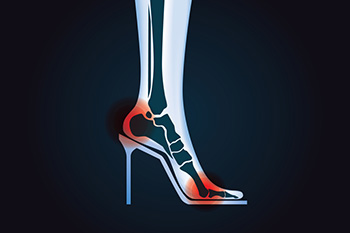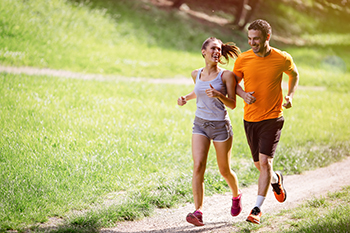
High heels have long been celebrated for their ability to elevate fashion and style. However, it is important to recognize that these fashionable footwear choices can come at a significant cost to the health of your feet. One of the primary concerns is the alteration of your foot's natural position. High heels force your body weight forward, causing an unnatural distribution of pressure. This can lead to conditions such as bunions, hammer toes, and metatarsalgia. Additionally, the increased pressure on the balls of your feet can cause pain and calluses. The elevated heels also reduce the length of your calf muscles, which can lead to shortening of the Achilles tendon and discomfort. Wearing high heels regularly may also contribute to balance issues and an increased risk of ankle sprains. While high heels may be a fashion statement, it is essential to wear them in moderation and prioritize your foot health. Consider lower-heeled options or flats for daily wear, saving those stylish stilettos for special occasions. If you would like more information about the dangers of wearing high heels, it is suggested that you confer with a podiatrist who can provide you with the knowledge you are seeking.
High heels have a history of causing foot and ankle problems. If you have any concerns about your feet or ankles, contact one of our podiatrists from Foot and Ankle Clinics, PA. Our doctors can provide the care you need to keep you pain-free and on your feet.
Effects of High Heels on the Feet
High heels are popular shoes among women because of their many styles and societal appeal. Despite this, high heels can still cause many health problems if worn too frequently.
Which Parts of My Body Will Be Affected by High Heels?
- Ankle Joints
- Achilles Tendon – May shorten and stiffen with prolonged wear
- Balls of the Feet
- Knees – Heels cause the knees to bend constantly, creating stress on them
- Back – They decrease the spine’s ability to absorb shock, which may lead to back pain. The vertebrae of the lower back may compress.
What Kinds of Foot Problems Can Develop from Wearing High Heels?
- Corns
- Calluses
- Hammertoe
- Bunions
- Morton’s Neuroma
- Plantar Fasciitis
How Can I Still Wear High Heels and Maintain Foot Health?
If you want to wear high heeled shoes, make sure that you are not wearing them every day, as this will help prevent long term physical problems. Try wearing thicker heels as opposed to stilettos to distribute weight more evenly across the feet. Always make sure you are wearing the proper shoes for the right occasion, such as sneakers for exercising. If you walk to work, try carrying your heels with you and changing into them once you arrive at work. Adding inserts to your heels can help cushion your feet and absorb shock. Full foot inserts or metatarsal pads are available.
If you have any questions please feel free to contact our offices located in Woodbury, West St. Paul, and Edina, MN . We offer the newest diagnostic and treatment technologies for all your foot and ankle needs.




